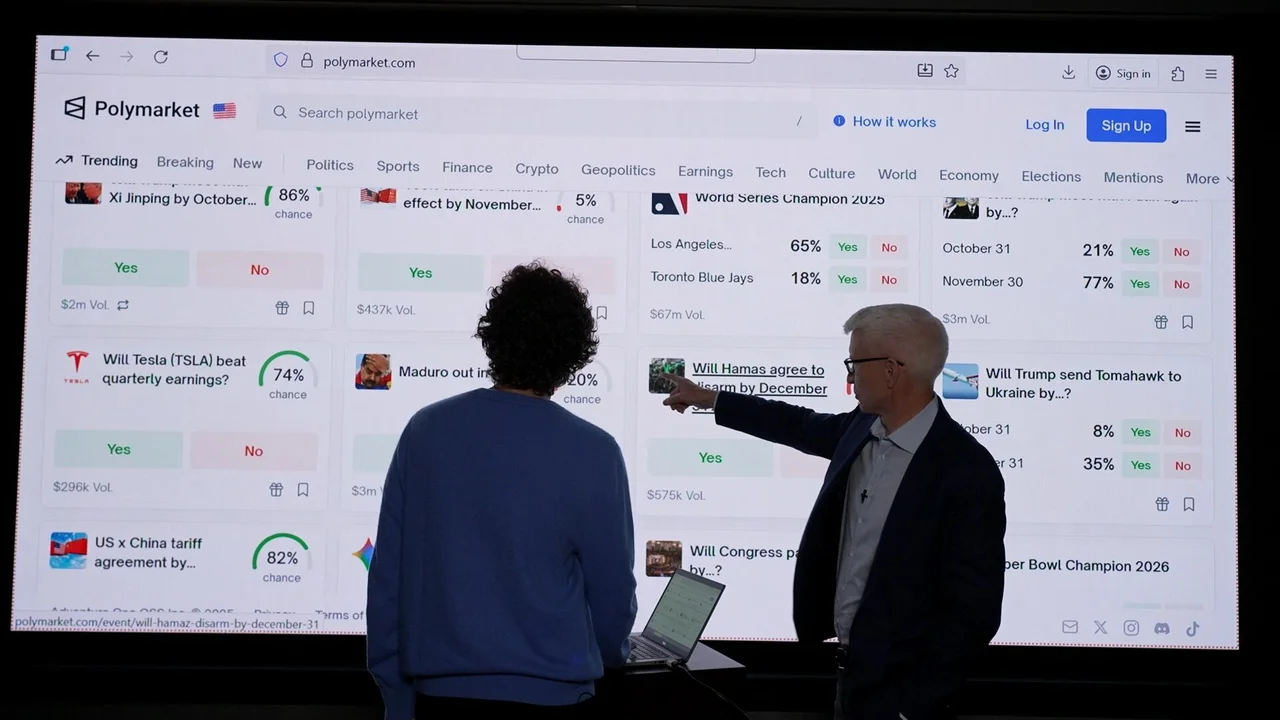Don’t Start Until You Know What to Measure

In startup culture, we glorify action. Hustle is the mantra. Build fast. Launch faster. Iterate. Pivot. Scale. But what if the most important move a founder can make is… pausing? What if, before writing a line of code, spending a dollar on ads, or launching a feature, the most valuable step is asking:
“How will I measure the impact of this?”
That’s the exact lesson Sergey Kyune, founder of MeetMillie.ai, learned while building, and it’s one every entrepreneur needs to hear.
“If you don’t know how you’ll measure the impact of a decision, then you don’t know why you’re making it.”
— Sergey Kyune (Indie Hackers Interview)
Most founders don’t fail because they move too slowly. They fail because they’re solving the wrong problems, or they’re solving the right problems but have no clue whether what they’re doing is working.
Welcome to the quiet killer of startups: measuring the wrong things or nothing at all.
Building Blind: Why Startups Stumble Without Metrics
It’s common to hear things like: “Let’s just ship and see what happens.” “We’ll track user growth later.” “We don’t need analytics right now; we need users.”
That’s the same as flying a plane with no dashboard. You might get off the ground. You might even coast for a while. But sooner or later, you're flying blind, and you won’t know whether you’re going up, stalling, or nose-diving until it’s too late.
Startup success isn’t about how much you build. It’s about how effectively you learn, and learning requires measurement.
Sergey’s Simple Rule: No Metric, No Move
In his Indie Hackers interview, Sergey shared the pivotal insight that transformed the way he builds:
“We realized we couldn’t justify any decision - hiring, product features, marketing - until we knew how we’d track the outcome.”
This one mindset shift changed how he approached everything. When you bake measurement into the beginning of every decision, not the end, you stop wasting time. You build with intention.
Whether it's:
- adding a new onboarding flow,
- testing a pricing strategy, or
- launching a paid ad campaign,
…Sergey’s rule applies: Don’t make a move unless you know what you’ll measure.
What to Measure in a Startup (And Why Most Founders Get It Wrong)
There’s a huge misconception that measurement is just about dashboards and Google Analytics. But real startup metrics are much deeper. It’s not about tracking everything, it’s about knowing what actually matters right now.
Here’s the messy truth: The metrics that matter depend on your stage.
Early stage? Focus on learning: Are you solving a real problem?
Post-MVP? Focus on engagement: Are users sticking around?
Growth stage? Focus on scale: What’s driving conversion or churn?
Marc Andreessen, co-founder of a16z, said it best:
“The only thing that matters is getting to product/market fit.”
— Marc Andreessen (PMF Guide)
But how do you know you’re getting there if you’re not measuring retention, satisfaction, or engagement? Without metrics, "product/market fit" becomes a gut feeling, not a milestone.
The Startup Stage Matters: What to Measure and When
One of the most dangerous traps a founder can fall into is measuring everything, or worse, measuring nothing, because they don’t know what matters right now. The truth is, what you need to measure evolves with your startup’s stage. There is no “one-size-fits-all” dashboard. Early-stage startups shouldn’t obsess over MRR just yet, and growth-stage companies shouldn’t be relying on anecdotal user feedback.
In the problem validation phase, before you even have a product, your most valuable data comes from real conversations. This is the time to talk to potential users, not to sell, but to listen. The metric that matters here isn't quantitative but emotional. How many people bring up the same problem unprompted? Do they light up when you mention your solution? If five out of ten interviews result in deep, detailed conversations about the same pain point, you’re on the right track.
Next comes the solution testing or MVP phase. Now you’ve got something to put in front of people. At this stage, forget vanity numbers like how many people visited your landing page. What matters is behavior. Are users completing the core task you built for them? Are they coming back without a prompt? The signal here is retention over days and weeks, not just signups.
If those users stick around, you’re approaching the product-market fit stage. This is where it gets tricky because the product might work, but the love might be missing. So, how do you tell? Rahul Vohra of Superhuman introduced a brilliant method here: ask users, “How would you feel if you could no longer use this product?” If at least 40% of them say “very disappointed,” you’re onto something people need, not just like.
Finally, in the growth and scaling stage, it’s time to get surgical. You’re not just proving value, you’re optimizing efficiency. Now you need to understand how much it costs to get a customer, how long they stay, and how much they pay over time. This is where acronyms like CAC (Customer Acquisition Cost), LTV (Lifetime Value), and MRR (Monthly Recurring Revenue) become critical, not just because investors care, but because your survival depends on sustainable unit economics.
Knowing what to measure at each stage isn’t just helpful. It’s the difference between growth and chaos.
5 Red Flags You’re Measuring the Wrong Thing
Spotting the signs of metric misalignment early can save your startup months of wasted effort. One obvious red flag is when you’re celebrating traffic spikes while conversion remains flat. Website visitors don’t pay your bills, customers do. If your dashboard is glowing but your Stripe account isn’t, you’re looking at the wrong numbers.
Another subtle warning is when your team keeps building shiny new features, but retention drops month after month. This often signals that the features are solving your curiosity, not your users' problems. Users don’t care about innovation unless it helps them get something done.
If you’re launching marketing campaigns without a clear goal in mind, no defined metric for success or failure, that’s another major issue. Doing something “just to test” isn’t lean if there’s no way to learn from the results. It’s not experimentation; it’s waste.
Your analytics stack might also be misleading you. Dashboards can look impressive, but if nobody is using them to make decisions, you’ve created a report graveyard, not a feedback loop. Metrics must inform choices, not decorate presentations.
And finally, relying solely on gut instincts when the data says otherwise can sink even the smartest teams. Intuition is valuable, but only when grounded in evidence. The best founders know when to trust their gut and when to go looking for proof.
How to Make Metrics Your Operating System
For a startup to thrive, measurement must become more than a reporting function, it needs to be the operating system that runs every decision, sprint, and meeting. That starts by flipping your default way of working: from "build and see what happens" to “define the result before you act.”
When your team kicks off a new initiative, the very first question should be “What outcome are we trying to improve?” This forces clarity. Instead of a vague goal like “improve onboarding,” you might decide the goal is to increase activation rate from 40% to 60% within 3 weeks. That specificity gives your team a clear target and enables better experimentation.
Rather than tracking dozens of data points, the most effective teams choose one core metric per project or per product stage. This doesn't mean ignoring other data, it just means knowing what matters most right now. When everyone rallies around that one number, you avoid distraction and drive alignment.
Once the metric is set, make it visible. Post it on dashboards. Include it in daily standups. Celebrate wins and reflect on losses around them. If your team forgets the metric, it’s no longer guiding decisions.
Ownership is the next layer. Every key metric should have someone responsible, not in a punitive way, but in an accountability sense. If no one owns the number, no one feels responsible for moving it.
Finally, measurement hygiene involves regular reflection. Metrics are not forever. They evolve. Reassess every few weeks: Are we still tracking the right thing? Are we seeing results? If not, is it the tactic or the metric that’s off?
In Sergey’s words: “You don’t need 20 metrics. You need 1 that matters for your stage.”
Founders Who Got It Right (and Wrong)
Sergey’s story isn’t an outlier. Many of the world’s top startups have been powered by sharp, intentional measurement from day one.
Superhuman is a standout. Founder Rahul Vohra realized that traditional activation metrics weren’t telling the full story. Instead of looking at usage rates or onboarding completions, he asked users directly: “Would you be very disappointed if Superhuman disappeared?” The results were clear, once that number hit 40%, they knew it was time to scale. What’s powerful here isn’t just the question, it’s the discipline of refusing to scale before the data validated demand.
On the flip side, Color, a photo-sharing startup backed by Sequoia Capital, launched with $41 million in funding and a ton of hype, but little understanding of actual user needs. The team built complex features without testing real engagement or measuring product stickiness. The result? A shutdown within a year. Color didn’t fail because it lacked talent, it failed because it lacked measurement.
There’s also Dropbox, which famously tracked viral referral loops early on. Founder Drew Houston didn’t just hope users would invite others, he measured referral rate, invitation acceptance, and conversion from invitee to active user. That laser focus helped Dropbox grow to millions of users on a minimal marketing budget.
Measurement isn’t just a back-end activity. It’s a front-line growth strategy.
Why Founders Avoid Measurement—and How to Fix That
For all the benefits, many founders still avoid defining or tracking metrics. Why? Often, it comes down to fear and friction.
Some are afraid that tracking metrics will reveal hard truths, like that nobody’s using the product, or that the new feature didn't help. Others assume it’s too technical or boring. “We’ll deal with that later” becomes a mantra.
But avoiding metrics is like ignoring your check engine light. You don’t fix the problem by pretending it doesn’t exist.
Here’s how to overcome that resistance.
First, reframe measurement as empowerment, not punishment. Data isn’t there to make you feel bad, it’s there to help you improve. Seeing that something didn’t work means you saved time by learning fast.
Second, make measurement lightweight. You don’t need a full-blown analytics stack on Day 1. Tools like Mixpanel, Amplitude, or even just a Google Sheet can be enough. Start small. What matters is the habit, not the tech.
And third, tie metrics to excitement. When a team sees a metric move because of their work, it builds momentum. You create a culture where progress is visible, and that’s incredibly motivating.
The Right Metrics at the Right Time
Here’s a basic framework you can steal, adapted from Lean Startup principles and Sergey’s own experience:
1. Problem Validation Stage
Goal: Confirm the problem is real and painful enough.
Key Metrics:
a. Number of user interviews
b. % of people who describe the problem unprompted
c. “Would you pay for a solution?” score
At this stage, qualitative data is gold. You're not looking for signups or clicks—you're looking for desperation and clarity.
2. Solution Testing / MVP Stage
Goal: Validate your solution works well enough to solve the problem.
Key Metrics:
a. Activation rate (first successful task completed)
b. Retention over 7, 14, 30 days
c. Number of return users
If people try your product once and don’t come back, the MVP isn't solving the problem well enough.
3. Product-Market Fit Stage
Goal: Determine if people love the product and would be upset without it.
Key Metrics:
a. Net Promoter Score (NPS)
b. % of users who’d be “very disappointed” if the product disappeared
c. Daily Active Users (DAU) / Monthly Active Users (MAU)
This is where Sean Ellis’s product-market fit survey becomes useful: “How would you feel if you could no longer use this product?”
If 40%+ say “very disappointed,” you're close to PMF.
4. Growth and Scaling Stage
Goal: Acquire and retain customers sustainably.
Key Metrics:
a. Customer Acquisition Cost (CAC)
b. Customer Lifetime Value (LTV)
c. Conversion rate from free to paid
d. Monthly Recurring Revenue (MRR)
You’re now optimizing the engine. Every marketing dollar must return more than it costs.
Sergey’s Case Study: Metrics-First Product Decisions
Let’s zoom in on one of Sergey’s most important decisions while building MeetMillie, an AI calendar assistant.
Instead of blindly adding integrations or polishing UX, his team started by asking:
“What’s the metric we’re trying to move with this feature?”
That question became their compass.
They realized the biggest user drop-off happened during onboarding. So instead of launching new features, they focused on reducing onboarding friction. They tracked activation rate, the % of users who completed onboarding and booked their first meeting. By improving copy, email nudges, and in-app prompts, they increased activation by over 40% in two weeks.
No guesswork. Just focused measurement → fast improvement → real results.
The Danger of Vanity Metrics
Not all metrics are created equal. Sergey warns against what he calls “feel-good numbers” — things that make you feel busy but tell you nothing useful.
Examples:
1. Total signups (without activation)
2. Page views (without conversion)
3. Instagram likes (without clicks or sales)
“The vanity metrics, the gross numbers, are the same in success and failure with startups. … Companies love to put them out, because it makes them look good and doesn’t reveal anything true about their business.”
— Eric Ries, The Lean Startup author, reflecting on “success theatre” and the misleading nature of vanity metrics
Instead, you need actionable metrics, numbers that lead to decisions.
Read - Agentic AI for founders: Everything you need to know

square.jpg)










